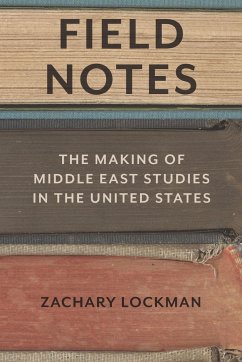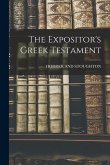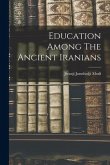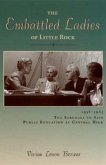- Broschiertes Buch
- Merkliste
- Auf die Merkliste
- Bewerten Bewerten
- Teilen
- Produkt teilen
- Produkterinnerung
- Produkterinnerung
Zachary Lockman is Professor of Middle Eastern and Islamic Studies and of History at New York University. He is the author of Contending Visions of the Middle East: The History and Politics of Orientalism (2004, 2010).
Andere Kunden interessierten sich auch für
![Teaching History Then and Now Teaching History Then and Now]() Larry CubanTeaching History Then and Now39,99 €
Larry CubanTeaching History Then and Now39,99 €![The Expositor's Greek Testament The Expositor's Greek Testament]() The Expositor's Greek Testament30,99 €
The Expositor's Greek Testament30,99 €![Wherever I Go, I Will Always Be a Loyal American Wherever I Go, I Will Always Be a Loyal American]() Yoon PakWherever I Go, I Will Always Be a Loyal American78,99 €
Yoon PakWherever I Go, I Will Always Be a Loyal American78,99 €![Thinking Historically Thinking Historically]() Stephane LevesqueThinking Historically51,99 €
Stephane LevesqueThinking Historically51,99 €![With All Deliberate Speed With All Deliberate Speed]() With All Deliberate Speed25,99 €
With All Deliberate Speed25,99 €![Education Among The Ancient Iranians Education Among The Ancient Iranians]() Jivanji Jamshedji ModiEducation Among The Ancient Iranians19,99 €
Jivanji Jamshedji ModiEducation Among The Ancient Iranians19,99 €![The Embattled Ladies of Little Rock: 1958-1963 the Struggle to Save Public Education at Central High The Embattled Ladies of Little Rock: 1958-1963 the Struggle to Save Public Education at Central High]() Lost Coast PressThe Embattled Ladies of Little Rock: 1958-1963 the Struggle to Save Public Education at Central High13,99 €
Lost Coast PressThe Embattled Ladies of Little Rock: 1958-1963 the Struggle to Save Public Education at Central High13,99 €-
-
-
Zachary Lockman is Professor of Middle Eastern and Islamic Studies and of History at New York University. He is the author of Contending Visions of the Middle East: The History and Politics of Orientalism (2004, 2010).
Hinweis: Dieser Artikel kann nur an eine deutsche Lieferadresse ausgeliefert werden.
Hinweis: Dieser Artikel kann nur an eine deutsche Lieferadresse ausgeliefert werden.
Produktdetails
- Produktdetails
- Verlag: Stanford University Press
- Seitenzahl: 376
- Erscheinungstermin: 30. März 2016
- Englisch
- Abmessung: 228mm x 151mm x 27mm
- Gewicht: 515g
- ISBN-13: 9780804799065
- ISBN-10: 0804799067
- Artikelnr.: 44382374
- Herstellerkennzeichnung
- Libri GmbH
- Europaallee 1
- 36244 Bad Hersfeld
- gpsr@libri.de
- Verlag: Stanford University Press
- Seitenzahl: 376
- Erscheinungstermin: 30. März 2016
- Englisch
- Abmessung: 228mm x 151mm x 27mm
- Gewicht: 515g
- ISBN-13: 9780804799065
- ISBN-10: 0804799067
- Artikelnr.: 44382374
- Herstellerkennzeichnung
- Libri GmbH
- Europaallee 1
- 36244 Bad Hersfeld
- gpsr@libri.de
Zachary Lockman is Professor of Middle Eastern and Islamic Studies and of History at New York University. He is the author of Contending Visions of the Middle East: The History and Politics of Orientalism (2004, 2010).
Contents and Abstracts
Preface
chapter abstract
The Preface explains what this book is about, its main focus and sources,
some of its key arguments, and the scholarly literatures it seeks to engage
with. Unlike the author's earlier book Contending Visions of the Middle
East, this book is based on the archives of foundations, academic
organizations and universities, and it explores how area studies - and
especially Middle East studies - were conceived and launched as new
academic fields and how they evolved in the decades that followed. The
approach is in keeping with a recent scholarly trend that "follows the
money" as a way to elucidate how academic disciplines and fields, and forms
of knowledge, have been shaped by extra-academic influences, including the
patronage of the big foundations. The Preface briefly discusses some work
on area studies as a way of clarifying what this book seeks to do, and why.
1"We Shall Have to Understand It"
chapter abstract
This chapter discusses the rise of the Carnegie and Rockfeller
philanthropic foundations before the First World War as well as of the
establishment of the American Council of Learned Societies and the Social
Science Research Council in the 1920s, and explores how, from the later
1920s through the 1930s, foundation funding channeled directly to scholars
and universities as well as through the ACLS fostered the development of
new networks and sites that fostered the expansion of cross-disciplinary
scholarship and training (including language training) focused on specific
world regions (rather than along conventional disciplinary lines),
especially non-Western regions and their languages. These developments
provided experience and models that would be drawn on during and after the
Second World War to produce what would come to be called area studies.
2"The Regional Knowledge Now Required"
chapter abstract
This chapter shows how, during the Second World War, the idea of producing
interdisciplinary knowledge that was focused on geographic regions and
would be useful to government and the military was fostered at a range of
new entities and sites, including the Office of Strategic Services, the
Ethnogeographic Board and the Army Specialized Training Program, through
which thousands of recruits received training in foreign languages and
cultures on college and university campuses. Fueled by the conviction that
after the war Americans would need knowledge about the world commensurate
with the country's new status as a global power, these developments
crystallized into a growing sentiment that area studies must become a
permanent component of postwar higher education, accompanied by efforts to
define what this new field should be.
3Launching a New Field
chapter abstract
Even before the end of WWII, the Rockefeller and Carnegie foundations,
working closely with the SSRC, began planning to fund a network of
university-based area studies centers to produce a new kind of
interdisciplinary knowledge and train graduate students accordingly.
Large-scale foundation funding resulted in new institutions and practices
and by the late 1940s area studies was up and running as a new academic
field. Though it was certainly inflected by Cold War concerns and
priorities, this chapter argues that its development and content cannot be
reduced to them. Another relevant context was the rapid expansion of higher
education in the United States that began after the war, and proliferation
of new modes of university-based research and training. The rise of area
studies was accompanied by considerable contention over its purposes and
goals, and by SSRC academics' (ultimately unsuccessful) efforts to
elaborate its theory and methodology.
4Princeton, the ACLS and Postwar Near Eastern Studies
chapter abstract
This chapter explores the establishment of the first purportedly
interdisciplinary Middle East studies in the United States, at Princeton in
1947, with Carnegie and Rockfeller funding, and reconstructs the
vicissitudes of that program into the 1950s. It then investigates the
efforts of the American Council of Learned Societies to promote its vision
of Middle East studies, with an emphasis on undergraduate education and
language instruction, and why that vision ultimately lost out to the Social
Science Research Council's vision focusing on social-science research and
on graduate training.
5A Committee for the Near and Middle East
chapter abstract
This chapter explores the SSRC's engagement with Middle East studies in the
first half of the 1950s, mainly through the vehicle of a new SSRC Committee
on the Near and Middle East charged with leading the field's intellectual
and institutional development. Constituted in 1951, this committee proved
unable to formulate an effective research program or to secure funding from
the Ford Foundation, which became by far the biggest patron of area studies
in the 1950s.
6Field-Building in Boom Times
chapter abstract
This chapter focuses on the decade from the mid-1950s to the mid-1960s,
during which, thanks to a massive influx of foundation and (from 1958)
federal funding, Middle East studies got off the ground. It explores this
development through the work of the reconstituted SSRC committee for the
field, which accomplished a great deal in terms of establishing the field's
infrastructure (language-training programs, research fellowship programs,
library and bibliographic resources, etc.) but was much less successful at
its task of elaborating a research agenda rooted in some coherent paradigm
of area studies or Middle East studies.
7"A Need for More Regular Contact"
chapter abstract
By the early/mid 1960s, the rapid growth of Middle East studies created the
material basis for a national professional organization for the field, and
this chapters explores the efforts to achieve that. It begins by
reconstructing the rise and fall of the American Association for Middle
East Studies, which played an active role for some years but then
disappeared, apparently because of its Zionist connections. It then
narrates the foundation of the Middle East Studies Association in 1966,
that association's early history, contention within it concerning politics,
diversity and democracy, and how scholars and institutions in this field
came to be subjected to politically motivated attacks by outside groups.
8"The Lower Parts of Max Weber"
chapter abstract
This chapter traces the trajectory of the SSRC-ACLS Joint Committee on the
Near and Middle East form the late 1960s to the 1980s, focusing on its
ongoing (but largely unsuccessful) struggle to formulate a coherent
research agenda for the field, its members' anxieties about what they
perceived as the inferiority and backwardness of their field in relation to
disciplines like political science, and their pessimism about the field's
prospects. It ends on the cusp of the changes of the 1980s that transformed
many humanities fields, including area studies.
Epilogue
chapter abstract
The Epilogue opens by discussing the SSRC's decision in 1996 to dissolve
its regional committees and put in place a new structure for its
international work. Summing up a key thrust of the book, it argues that the
1980s proved a turning point for Middle East studies because the
intellectual, social and cultural shifts of that period rendered moot the
longstanding quest for a paradigm that would inform the field
intellectually. Thus it came to be recognized that this field had an
essentially institutional and social basis, rather than an intellectual
one. The Epilogue also engages with the widespread scholarly perspective
that depicts area studies as essentially a product of the Cold War as well
as with a number of other takes on the history and import of area studies,
and discusses the question of what impact efforts to produce
"policy-relevant" knowledge actually had on policymakers.
Preface
chapter abstract
The Preface explains what this book is about, its main focus and sources,
some of its key arguments, and the scholarly literatures it seeks to engage
with. Unlike the author's earlier book Contending Visions of the Middle
East, this book is based on the archives of foundations, academic
organizations and universities, and it explores how area studies - and
especially Middle East studies - were conceived and launched as new
academic fields and how they evolved in the decades that followed. The
approach is in keeping with a recent scholarly trend that "follows the
money" as a way to elucidate how academic disciplines and fields, and forms
of knowledge, have been shaped by extra-academic influences, including the
patronage of the big foundations. The Preface briefly discusses some work
on area studies as a way of clarifying what this book seeks to do, and why.
1"We Shall Have to Understand It"
chapter abstract
This chapter discusses the rise of the Carnegie and Rockfeller
philanthropic foundations before the First World War as well as of the
establishment of the American Council of Learned Societies and the Social
Science Research Council in the 1920s, and explores how, from the later
1920s through the 1930s, foundation funding channeled directly to scholars
and universities as well as through the ACLS fostered the development of
new networks and sites that fostered the expansion of cross-disciplinary
scholarship and training (including language training) focused on specific
world regions (rather than along conventional disciplinary lines),
especially non-Western regions and their languages. These developments
provided experience and models that would be drawn on during and after the
Second World War to produce what would come to be called area studies.
2"The Regional Knowledge Now Required"
chapter abstract
This chapter shows how, during the Second World War, the idea of producing
interdisciplinary knowledge that was focused on geographic regions and
would be useful to government and the military was fostered at a range of
new entities and sites, including the Office of Strategic Services, the
Ethnogeographic Board and the Army Specialized Training Program, through
which thousands of recruits received training in foreign languages and
cultures on college and university campuses. Fueled by the conviction that
after the war Americans would need knowledge about the world commensurate
with the country's new status as a global power, these developments
crystallized into a growing sentiment that area studies must become a
permanent component of postwar higher education, accompanied by efforts to
define what this new field should be.
3Launching a New Field
chapter abstract
Even before the end of WWII, the Rockefeller and Carnegie foundations,
working closely with the SSRC, began planning to fund a network of
university-based area studies centers to produce a new kind of
interdisciplinary knowledge and train graduate students accordingly.
Large-scale foundation funding resulted in new institutions and practices
and by the late 1940s area studies was up and running as a new academic
field. Though it was certainly inflected by Cold War concerns and
priorities, this chapter argues that its development and content cannot be
reduced to them. Another relevant context was the rapid expansion of higher
education in the United States that began after the war, and proliferation
of new modes of university-based research and training. The rise of area
studies was accompanied by considerable contention over its purposes and
goals, and by SSRC academics' (ultimately unsuccessful) efforts to
elaborate its theory and methodology.
4Princeton, the ACLS and Postwar Near Eastern Studies
chapter abstract
This chapter explores the establishment of the first purportedly
interdisciplinary Middle East studies in the United States, at Princeton in
1947, with Carnegie and Rockfeller funding, and reconstructs the
vicissitudes of that program into the 1950s. It then investigates the
efforts of the American Council of Learned Societies to promote its vision
of Middle East studies, with an emphasis on undergraduate education and
language instruction, and why that vision ultimately lost out to the Social
Science Research Council's vision focusing on social-science research and
on graduate training.
5A Committee for the Near and Middle East
chapter abstract
This chapter explores the SSRC's engagement with Middle East studies in the
first half of the 1950s, mainly through the vehicle of a new SSRC Committee
on the Near and Middle East charged with leading the field's intellectual
and institutional development. Constituted in 1951, this committee proved
unable to formulate an effective research program or to secure funding from
the Ford Foundation, which became by far the biggest patron of area studies
in the 1950s.
6Field-Building in Boom Times
chapter abstract
This chapter focuses on the decade from the mid-1950s to the mid-1960s,
during which, thanks to a massive influx of foundation and (from 1958)
federal funding, Middle East studies got off the ground. It explores this
development through the work of the reconstituted SSRC committee for the
field, which accomplished a great deal in terms of establishing the field's
infrastructure (language-training programs, research fellowship programs,
library and bibliographic resources, etc.) but was much less successful at
its task of elaborating a research agenda rooted in some coherent paradigm
of area studies or Middle East studies.
7"A Need for More Regular Contact"
chapter abstract
By the early/mid 1960s, the rapid growth of Middle East studies created the
material basis for a national professional organization for the field, and
this chapters explores the efforts to achieve that. It begins by
reconstructing the rise and fall of the American Association for Middle
East Studies, which played an active role for some years but then
disappeared, apparently because of its Zionist connections. It then
narrates the foundation of the Middle East Studies Association in 1966,
that association's early history, contention within it concerning politics,
diversity and democracy, and how scholars and institutions in this field
came to be subjected to politically motivated attacks by outside groups.
8"The Lower Parts of Max Weber"
chapter abstract
This chapter traces the trajectory of the SSRC-ACLS Joint Committee on the
Near and Middle East form the late 1960s to the 1980s, focusing on its
ongoing (but largely unsuccessful) struggle to formulate a coherent
research agenda for the field, its members' anxieties about what they
perceived as the inferiority and backwardness of their field in relation to
disciplines like political science, and their pessimism about the field's
prospects. It ends on the cusp of the changes of the 1980s that transformed
many humanities fields, including area studies.
Epilogue
chapter abstract
The Epilogue opens by discussing the SSRC's decision in 1996 to dissolve
its regional committees and put in place a new structure for its
international work. Summing up a key thrust of the book, it argues that the
1980s proved a turning point for Middle East studies because the
intellectual, social and cultural shifts of that period rendered moot the
longstanding quest for a paradigm that would inform the field
intellectually. Thus it came to be recognized that this field had an
essentially institutional and social basis, rather than an intellectual
one. The Epilogue also engages with the widespread scholarly perspective
that depicts area studies as essentially a product of the Cold War as well
as with a number of other takes on the history and import of area studies,
and discusses the question of what impact efforts to produce
"policy-relevant" knowledge actually had on policymakers.
Contents and Abstracts
Preface
chapter abstract
The Preface explains what this book is about, its main focus and sources,
some of its key arguments, and the scholarly literatures it seeks to engage
with. Unlike the author's earlier book Contending Visions of the Middle
East, this book is based on the archives of foundations, academic
organizations and universities, and it explores how area studies - and
especially Middle East studies - were conceived and launched as new
academic fields and how they evolved in the decades that followed. The
approach is in keeping with a recent scholarly trend that "follows the
money" as a way to elucidate how academic disciplines and fields, and forms
of knowledge, have been shaped by extra-academic influences, including the
patronage of the big foundations. The Preface briefly discusses some work
on area studies as a way of clarifying what this book seeks to do, and why.
1"We Shall Have to Understand It"
chapter abstract
This chapter discusses the rise of the Carnegie and Rockfeller
philanthropic foundations before the First World War as well as of the
establishment of the American Council of Learned Societies and the Social
Science Research Council in the 1920s, and explores how, from the later
1920s through the 1930s, foundation funding channeled directly to scholars
and universities as well as through the ACLS fostered the development of
new networks and sites that fostered the expansion of cross-disciplinary
scholarship and training (including language training) focused on specific
world regions (rather than along conventional disciplinary lines),
especially non-Western regions and their languages. These developments
provided experience and models that would be drawn on during and after the
Second World War to produce what would come to be called area studies.
2"The Regional Knowledge Now Required"
chapter abstract
This chapter shows how, during the Second World War, the idea of producing
interdisciplinary knowledge that was focused on geographic regions and
would be useful to government and the military was fostered at a range of
new entities and sites, including the Office of Strategic Services, the
Ethnogeographic Board and the Army Specialized Training Program, through
which thousands of recruits received training in foreign languages and
cultures on college and university campuses. Fueled by the conviction that
after the war Americans would need knowledge about the world commensurate
with the country's new status as a global power, these developments
crystallized into a growing sentiment that area studies must become a
permanent component of postwar higher education, accompanied by efforts to
define what this new field should be.
3Launching a New Field
chapter abstract
Even before the end of WWII, the Rockefeller and Carnegie foundations,
working closely with the SSRC, began planning to fund a network of
university-based area studies centers to produce a new kind of
interdisciplinary knowledge and train graduate students accordingly.
Large-scale foundation funding resulted in new institutions and practices
and by the late 1940s area studies was up and running as a new academic
field. Though it was certainly inflected by Cold War concerns and
priorities, this chapter argues that its development and content cannot be
reduced to them. Another relevant context was the rapid expansion of higher
education in the United States that began after the war, and proliferation
of new modes of university-based research and training. The rise of area
studies was accompanied by considerable contention over its purposes and
goals, and by SSRC academics' (ultimately unsuccessful) efforts to
elaborate its theory and methodology.
4Princeton, the ACLS and Postwar Near Eastern Studies
chapter abstract
This chapter explores the establishment of the first purportedly
interdisciplinary Middle East studies in the United States, at Princeton in
1947, with Carnegie and Rockfeller funding, and reconstructs the
vicissitudes of that program into the 1950s. It then investigates the
efforts of the American Council of Learned Societies to promote its vision
of Middle East studies, with an emphasis on undergraduate education and
language instruction, and why that vision ultimately lost out to the Social
Science Research Council's vision focusing on social-science research and
on graduate training.
5A Committee for the Near and Middle East
chapter abstract
This chapter explores the SSRC's engagement with Middle East studies in the
first half of the 1950s, mainly through the vehicle of a new SSRC Committee
on the Near and Middle East charged with leading the field's intellectual
and institutional development. Constituted in 1951, this committee proved
unable to formulate an effective research program or to secure funding from
the Ford Foundation, which became by far the biggest patron of area studies
in the 1950s.
6Field-Building in Boom Times
chapter abstract
This chapter focuses on the decade from the mid-1950s to the mid-1960s,
during which, thanks to a massive influx of foundation and (from 1958)
federal funding, Middle East studies got off the ground. It explores this
development through the work of the reconstituted SSRC committee for the
field, which accomplished a great deal in terms of establishing the field's
infrastructure (language-training programs, research fellowship programs,
library and bibliographic resources, etc.) but was much less successful at
its task of elaborating a research agenda rooted in some coherent paradigm
of area studies or Middle East studies.
7"A Need for More Regular Contact"
chapter abstract
By the early/mid 1960s, the rapid growth of Middle East studies created the
material basis for a national professional organization for the field, and
this chapters explores the efforts to achieve that. It begins by
reconstructing the rise and fall of the American Association for Middle
East Studies, which played an active role for some years but then
disappeared, apparently because of its Zionist connections. It then
narrates the foundation of the Middle East Studies Association in 1966,
that association's early history, contention within it concerning politics,
diversity and democracy, and how scholars and institutions in this field
came to be subjected to politically motivated attacks by outside groups.
8"The Lower Parts of Max Weber"
chapter abstract
This chapter traces the trajectory of the SSRC-ACLS Joint Committee on the
Near and Middle East form the late 1960s to the 1980s, focusing on its
ongoing (but largely unsuccessful) struggle to formulate a coherent
research agenda for the field, its members' anxieties about what they
perceived as the inferiority and backwardness of their field in relation to
disciplines like political science, and their pessimism about the field's
prospects. It ends on the cusp of the changes of the 1980s that transformed
many humanities fields, including area studies.
Epilogue
chapter abstract
The Epilogue opens by discussing the SSRC's decision in 1996 to dissolve
its regional committees and put in place a new structure for its
international work. Summing up a key thrust of the book, it argues that the
1980s proved a turning point for Middle East studies because the
intellectual, social and cultural shifts of that period rendered moot the
longstanding quest for a paradigm that would inform the field
intellectually. Thus it came to be recognized that this field had an
essentially institutional and social basis, rather than an intellectual
one. The Epilogue also engages with the widespread scholarly perspective
that depicts area studies as essentially a product of the Cold War as well
as with a number of other takes on the history and import of area studies,
and discusses the question of what impact efforts to produce
"policy-relevant" knowledge actually had on policymakers.
Preface
chapter abstract
The Preface explains what this book is about, its main focus and sources,
some of its key arguments, and the scholarly literatures it seeks to engage
with. Unlike the author's earlier book Contending Visions of the Middle
East, this book is based on the archives of foundations, academic
organizations and universities, and it explores how area studies - and
especially Middle East studies - were conceived and launched as new
academic fields and how they evolved in the decades that followed. The
approach is in keeping with a recent scholarly trend that "follows the
money" as a way to elucidate how academic disciplines and fields, and forms
of knowledge, have been shaped by extra-academic influences, including the
patronage of the big foundations. The Preface briefly discusses some work
on area studies as a way of clarifying what this book seeks to do, and why.
1"We Shall Have to Understand It"
chapter abstract
This chapter discusses the rise of the Carnegie and Rockfeller
philanthropic foundations before the First World War as well as of the
establishment of the American Council of Learned Societies and the Social
Science Research Council in the 1920s, and explores how, from the later
1920s through the 1930s, foundation funding channeled directly to scholars
and universities as well as through the ACLS fostered the development of
new networks and sites that fostered the expansion of cross-disciplinary
scholarship and training (including language training) focused on specific
world regions (rather than along conventional disciplinary lines),
especially non-Western regions and their languages. These developments
provided experience and models that would be drawn on during and after the
Second World War to produce what would come to be called area studies.
2"The Regional Knowledge Now Required"
chapter abstract
This chapter shows how, during the Second World War, the idea of producing
interdisciplinary knowledge that was focused on geographic regions and
would be useful to government and the military was fostered at a range of
new entities and sites, including the Office of Strategic Services, the
Ethnogeographic Board and the Army Specialized Training Program, through
which thousands of recruits received training in foreign languages and
cultures on college and university campuses. Fueled by the conviction that
after the war Americans would need knowledge about the world commensurate
with the country's new status as a global power, these developments
crystallized into a growing sentiment that area studies must become a
permanent component of postwar higher education, accompanied by efforts to
define what this new field should be.
3Launching a New Field
chapter abstract
Even before the end of WWII, the Rockefeller and Carnegie foundations,
working closely with the SSRC, began planning to fund a network of
university-based area studies centers to produce a new kind of
interdisciplinary knowledge and train graduate students accordingly.
Large-scale foundation funding resulted in new institutions and practices
and by the late 1940s area studies was up and running as a new academic
field. Though it was certainly inflected by Cold War concerns and
priorities, this chapter argues that its development and content cannot be
reduced to them. Another relevant context was the rapid expansion of higher
education in the United States that began after the war, and proliferation
of new modes of university-based research and training. The rise of area
studies was accompanied by considerable contention over its purposes and
goals, and by SSRC academics' (ultimately unsuccessful) efforts to
elaborate its theory and methodology.
4Princeton, the ACLS and Postwar Near Eastern Studies
chapter abstract
This chapter explores the establishment of the first purportedly
interdisciplinary Middle East studies in the United States, at Princeton in
1947, with Carnegie and Rockfeller funding, and reconstructs the
vicissitudes of that program into the 1950s. It then investigates the
efforts of the American Council of Learned Societies to promote its vision
of Middle East studies, with an emphasis on undergraduate education and
language instruction, and why that vision ultimately lost out to the Social
Science Research Council's vision focusing on social-science research and
on graduate training.
5A Committee for the Near and Middle East
chapter abstract
This chapter explores the SSRC's engagement with Middle East studies in the
first half of the 1950s, mainly through the vehicle of a new SSRC Committee
on the Near and Middle East charged with leading the field's intellectual
and institutional development. Constituted in 1951, this committee proved
unable to formulate an effective research program or to secure funding from
the Ford Foundation, which became by far the biggest patron of area studies
in the 1950s.
6Field-Building in Boom Times
chapter abstract
This chapter focuses on the decade from the mid-1950s to the mid-1960s,
during which, thanks to a massive influx of foundation and (from 1958)
federal funding, Middle East studies got off the ground. It explores this
development through the work of the reconstituted SSRC committee for the
field, which accomplished a great deal in terms of establishing the field's
infrastructure (language-training programs, research fellowship programs,
library and bibliographic resources, etc.) but was much less successful at
its task of elaborating a research agenda rooted in some coherent paradigm
of area studies or Middle East studies.
7"A Need for More Regular Contact"
chapter abstract
By the early/mid 1960s, the rapid growth of Middle East studies created the
material basis for a national professional organization for the field, and
this chapters explores the efforts to achieve that. It begins by
reconstructing the rise and fall of the American Association for Middle
East Studies, which played an active role for some years but then
disappeared, apparently because of its Zionist connections. It then
narrates the foundation of the Middle East Studies Association in 1966,
that association's early history, contention within it concerning politics,
diversity and democracy, and how scholars and institutions in this field
came to be subjected to politically motivated attacks by outside groups.
8"The Lower Parts of Max Weber"
chapter abstract
This chapter traces the trajectory of the SSRC-ACLS Joint Committee on the
Near and Middle East form the late 1960s to the 1980s, focusing on its
ongoing (but largely unsuccessful) struggle to formulate a coherent
research agenda for the field, its members' anxieties about what they
perceived as the inferiority and backwardness of their field in relation to
disciplines like political science, and their pessimism about the field's
prospects. It ends on the cusp of the changes of the 1980s that transformed
many humanities fields, including area studies.
Epilogue
chapter abstract
The Epilogue opens by discussing the SSRC's decision in 1996 to dissolve
its regional committees and put in place a new structure for its
international work. Summing up a key thrust of the book, it argues that the
1980s proved a turning point for Middle East studies because the
intellectual, social and cultural shifts of that period rendered moot the
longstanding quest for a paradigm that would inform the field
intellectually. Thus it came to be recognized that this field had an
essentially institutional and social basis, rather than an intellectual
one. The Epilogue also engages with the widespread scholarly perspective
that depicts area studies as essentially a product of the Cold War as well
as with a number of other takes on the history and import of area studies,
and discusses the question of what impact efforts to produce
"policy-relevant" knowledge actually had on policymakers.








